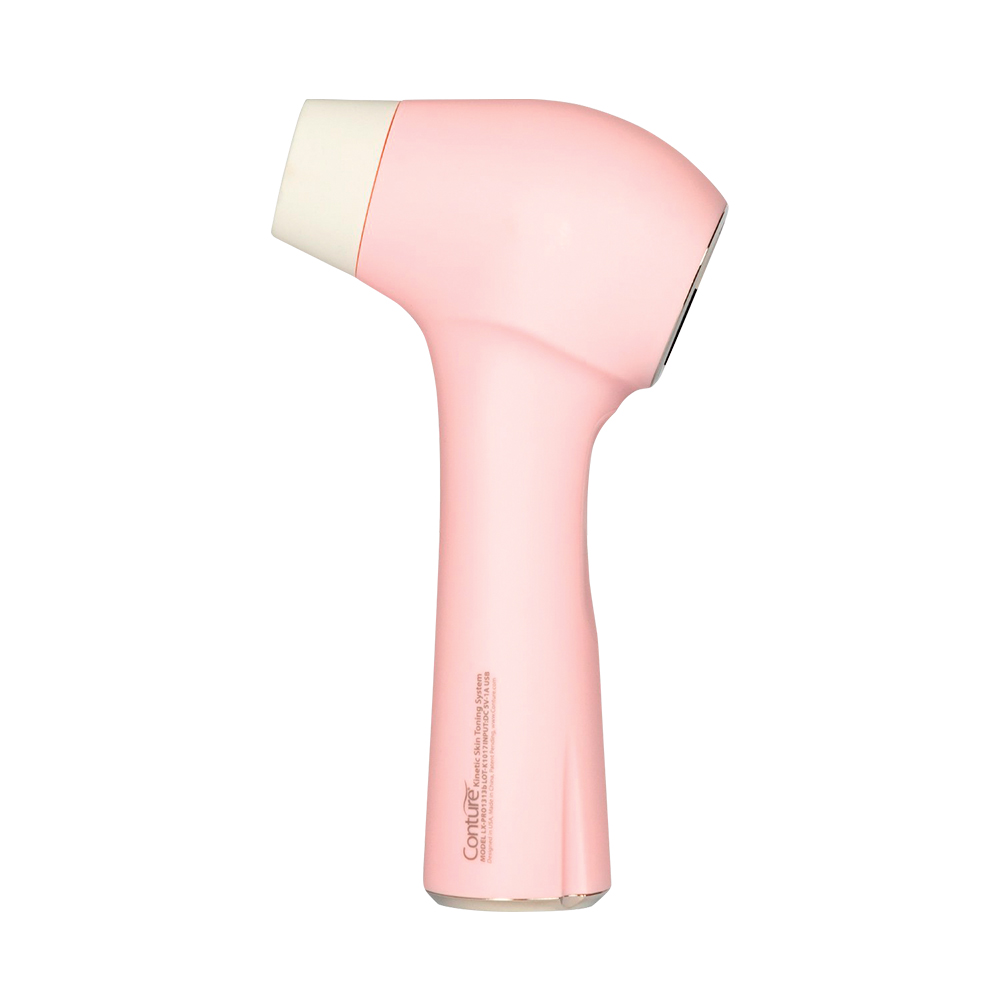
Pregnant for the First Time? Here’s 10 Things to Know
Pregnancy is a wild ride: One minute you’re exhausted, the next you’re full of energy; one day you’re sick to your stomach, the next you’re eating anything in sight. I’ve only been pregnant once (my sweet Ruby is nearly a year old), but boy do you learn a lot, every single day. These are 10 valuable lessons I learned throughout my pregnancy, with insight from leading experts, and though all of them may not apply to you, you can pass it along to your sister or friend. After all, we moms and mamas-to-be need to stick together!
01: Razor Sharp
By the third trimester, shaving becomes pretty difficult, as it’s tough to reach your calves and bikini line with a big baby belly in the way. Had I realized this prior to becoming pregnant, I would have opted for laser hair removal. (I had heard from several friends how painful bikini waxes are during pregnancy—one NewBeauty staffer actually left mid-wax because it was too painful to continue.) If you’re not yet pregnant and you have time to fit in a series of laser hair removal sessions—four to six are typically needed—I’d go for it. However, if body hair doesn’t bother you, then by all means, let it be.
What the expert says: “Due to hormonal changes, a pregnant person’s skin can become more sensitive, and plucking or waxing hair can be more painful,” says Rochester, NY dermatologist Lesley Loss, MD, adding that side effects like increased redness, sensitivity and swelling may also occur. “While bikini waxing is generally considered safe, I suggest my patients double check with their OBGYN first, and do not attempt to do it at home. Regarding laser hair removal, if a patient is pregnant, I advise them to stop all laser treatments due an increased risk for hyperpigmentation. I strongly recommend that my patients who are planning to or trying to conceive complete their laser series before there is any possibility of pregnancy.”
02: Filler Fix
If you love your neurotoxin and filler (we don’t blame you!), it’s advised not to “load up” while you’re trying to conceive with the thought that you’re prepping your skin for the 10 injection-free months that could follow. Believe me, this thought crossed my mind: “I wish I’d gotten a ‘last round’ of line-smoothing before I saw my positive pregnancy test.” However, I’m glad I didn’t because there are risks involved.
What the expert says: “Due to the fact that neurotoxins and fillers have not been studied in pregnant women— I would not recommend getting either one while trying to conceive,” says New York dermatologist Dendy Engelman, MD. “But, if you do happen to get them before your pregnancy is confirmed, there is no cause for panic. The dosing of products used for aesthetic purposes are minute. Additionally, studies in the past looking at actual botulinum toxin have found that it doesn’t cross the placenta barrier. However, we always err on the side of caution, so for those who are trying to conceive but still want a more toned look, I suggest using an at-home contouring device like Conture Kinetic Skin Toning Device ($99), which is safe to use while pregnant and trying to conceive. It not only helps restore radiance and firmness to the skin, but also improves the absorption of skin-care products.”

INSIDE TIP: Listening to pregnancy-themed podcasts proved incredibly helpful when I had questions about all of the topics mentioned here. Three I enjoyed: The Birth Hour, What to Expect and Mommy Labor Nurse.
03: Diet Do
If you’re not the best fruit and veggie eater, make it easier on yourself by having someone else do the work for you. I craved smoothies throughout all trimesters, and I’ve heard many pregnant women crave cold things because they don’t have a strong smell. My Daily Harvest subscription was an amazing addition to my daily routine—I whipped up a different flavor smoothie almost every morning—and I felt good knowing I was getting in solid nutrition and “eating the rainbow” before the day really started.
What the expert says: “While it’s important to take prenatal vitamins no matter how healthy you’re eating, Daily Harvest and other like-minded subscription services are great options to help pregnant women consume more of the necessary vitamins and minerals—like calcium, folate, protein, iron and DHA—through real fruits and vegetables,” says New York–based nutritionist Amy Shapiro, noting that many women don’t crave vegetables during pregnancy, so this is an easy way to get them in. “It’s convenient because they do all the heavy lifting for you, and the food is frozen, so it is always on hand when you’re hungry.”
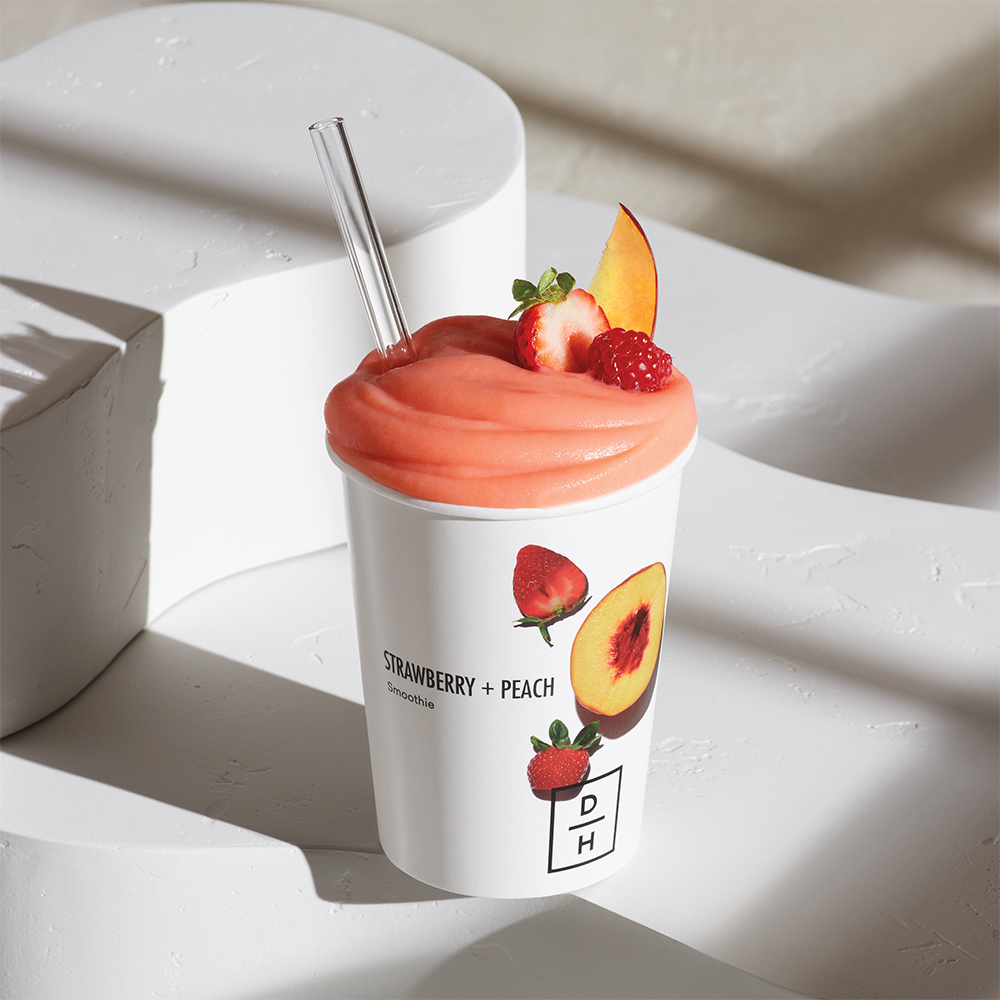
04: Stretch Out
You don’t have to wait until you have a “belly” to use belly butter. I felt silly using products like that until I had a visible belly (around 20 weeks or so), but in hindsight, I should have used them from day one to keep my skin super hydrated and promote better elasticity for what was to come. Three products I couldn’t get enough of: Mama Mio Tummy Rub Butter ($34), Kopari Tropical Coconut Melt ($30) (it smells like vacation) and HATCH Belly Oil ($64). However, it’s important to note that while it’s essential to keep stretched skin hydrated, unfortunately stretch marks are often genetic, so there’s no magic-bullet product to keep them away if your genes suggest otherwise.
What the expert says: “The tendency to get stretch marks may be genetic in some cases,” Reno, NV plastic surgeon Tiffany McCormack, MD says. “It may also depend on the size of the baby and the length of the pregnancy. I don’t personally believe creams and lotions can entirely prevent them—some products will help improve the overall quality of your skin and may be worth considering, but I would not count on them to prevent stretch marks altogether. If you do get stretch marks and want to minimize their appearance after your delivery, in-office treatments such as lasers and microneedling can typically help. And in some cases, a surgical tummy tuck can completely remove the skin where most stretch marks remain.”
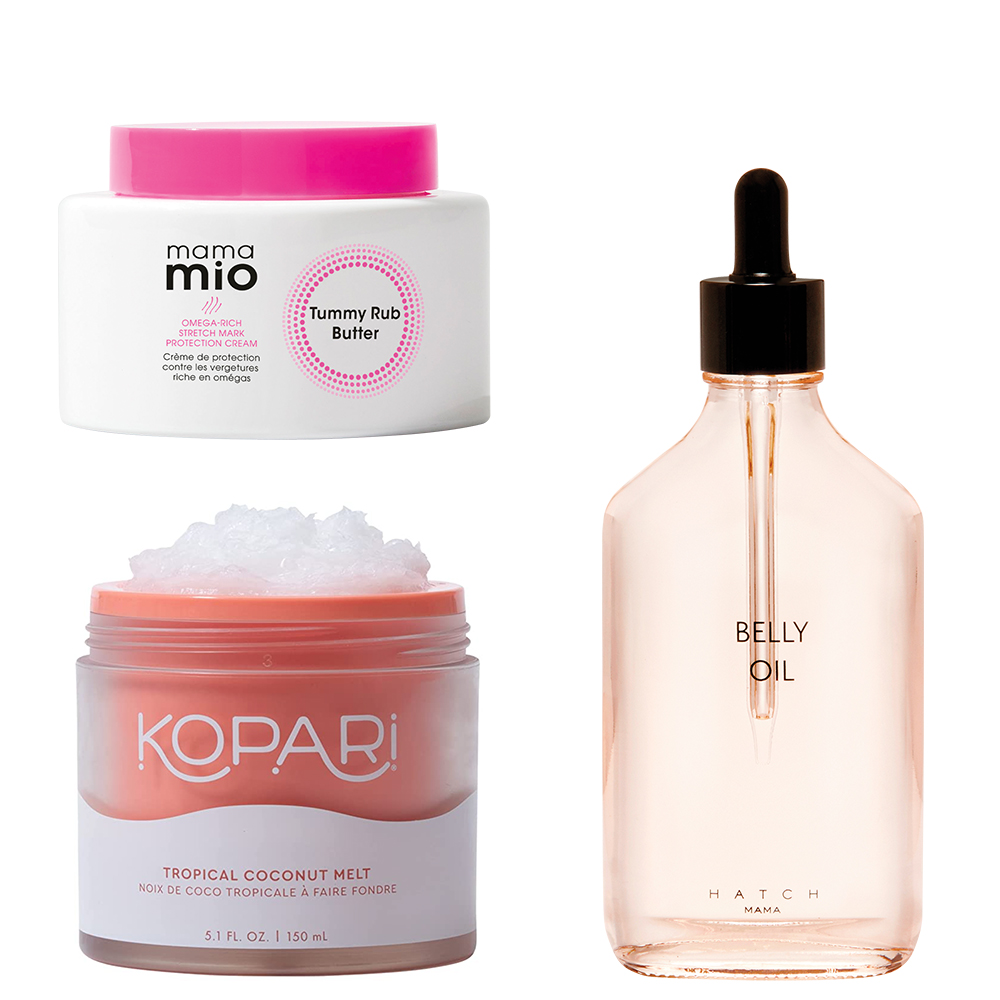
05: Dry Spell
Your eyes may get really dry, and your vision may actually change, too. Both things happened to me, and I found my contacts to be pretty uncomfortable for several weeks in my third trimester. If you wear contacts or glasses, your eye doctor will probably advise that you don’t come in for your annual appointment during pregnancy, but rather hold off until baby is born (when your eyes will readjust).
What the expert says: “It is very common for a woman’s eyes and vision to change during pregnancy,” says Oakland, NJ ophthalmologist Diane Hilal-Campo, MD, founder of twenty/twenty beauty. “The surge in hormones causes fluid shifts, which can change the shape of the cornea and lens temporarily, blurring vision. Women who already use glasses or contacts may notice they’re not as effective as they were pre-pregnancy, while those with healthy vision may observe weaker or blurry vision. However, large changes in vision, flashing lights or light sensitivity could be symptoms of pre-eclampsia and you should let your doctor know immediately. Dry eyes are also common during this time, making your eyes red and irritated. Preservative free artificial tears—popular ones are Refresh and Systane, available over the counter—are the safest to use, and you can use them as frequently as you like, with and without contact lenses.”
06: Ingredient Index
You don’t have to go crazy throwing out all of your skin-care products the moment you find out you’re pregnant. It’s true that some ingredients are general no-nos—retinol and retinoids are vitamin A derivatives that are proven to cause fetal deformities in high doses; plant-based bakuchiol is a safe alternative—but some are a little less black and white. I learned this early on about alphahydroxy and betahydroxy acids, as well as chemical sunscreen.
What the expert says: “While it is always best to err on the side of caution and talk to your doctor about any specific concerns, many ingredients are completely fine to use in moderation,” Dr. Engelman says. “I do not recommend using salicylic acid while pregnant, though some women do opt to use it in moderation. One method might be to use a cleanser that contains a low percentage of salicylic acid—less than 2 percent—rather than applying it as a leave-on product. However, an alternative would be to use glycolic acid, which is generally safe during pregnancy and can help reduce pore-clogging associated with acne. Another no-no is benzoyl peroxide. When it comes to sunscreen, it’s not the end of the world if you use a chemical sunscreen here and there— active ingredients include octisalate, octinoxate, avobenzone, and oxybenzone—but these formulas are absorbed by the skin and can enter the bloodstream. Therefore, I prefer mineral sunscreens made with zinc or titanium dioxide during pregnancy because they sit on the surface of the skin and do not get absorbed.”
INSIDE TIP: Do a patch test on your inner arm before using any new skin-care product during pregnancy. I was surprised at how my skin reacted—redness and irritation—to a few tried-andtrue ingredients (mainly acids) I had used for years prior.
07: Core Values
I learned later in my pregnancy that I should avoid sit-up motions, like curling up from bed to rearrange my massive pregnancy pillow, to prevent a separation—or worsening of the separation—of my abdominal muscles called diastasis recti. Apparently, it’s better to roll onto your side and get up that way, which isn’t convenient, especially in the middle of the night. However, one time I curled up “the wrong way” and my belly button poked out like a little tent, which startled me enough to keep from doing that again.
What the expert says: “You should not activate your rectus abdominis muscle during pregnancy, especially as your belly expands!” says Silicon Valley, CA plastic surgeon Kamakshi R. Zeidler, MD. “The muscles start to pull to the side around the expanding baby bump, which worsens their separation. After you have your baby, this separation can persist and lead to a potbelly look and feel. Sometimes there is no getting around this effect, but minimizing the amount of strain and separation during pregnancy definitely helps. If the diastasis is significant, a tummy tuck can cinch the waistline and flatten the abdomen. And if you aren’t ready for the commitment of surgery, a muscle stimulator like Emsculpt can help strengthen your core, though it won’t tighten loose skin. ”
08: Tight Squeeze
Though often reserved for long flights, compression socks can make a huge difference during pregnancy after a salty meal, or really anytime your feet and legs feel puffy, or you’re standing or sitting too much. I sit a lot throughout the workday, so I started wearing NUFABRX Maternity Compression Socks ($30) around the seven-month mark. Whereas some other brands I tried felt scratchy or itchy, these are infused with shea butter that releases throughout the day for moisturizing benefits. I also liked the brand’s compression leggings with full-belly coverage for extra support during workouts.
What the expert says: “Research suggests that nearly two in three women experience mild-to-moderate swelling during pregnancy, which is caused by a growing need for fluid, as well as the growing uterus putting pressure on veins and impairing blood flow. It tends to become most noticeable around the fifth month,” says Mike Drzewinkski, chief science officer for NUFABRX. “Scientific evidence supports the use of lighter-pressure compression socks to reduce the swelling, and we’ve taken the concept a step further by adding shea butter to moisturize the skin and mitigate skin issues caused by the swelling. We’re the only company with compression socks that are able to maintain the shea butter inside for up to 25 or more washes through a patented process we call HealthWear.”
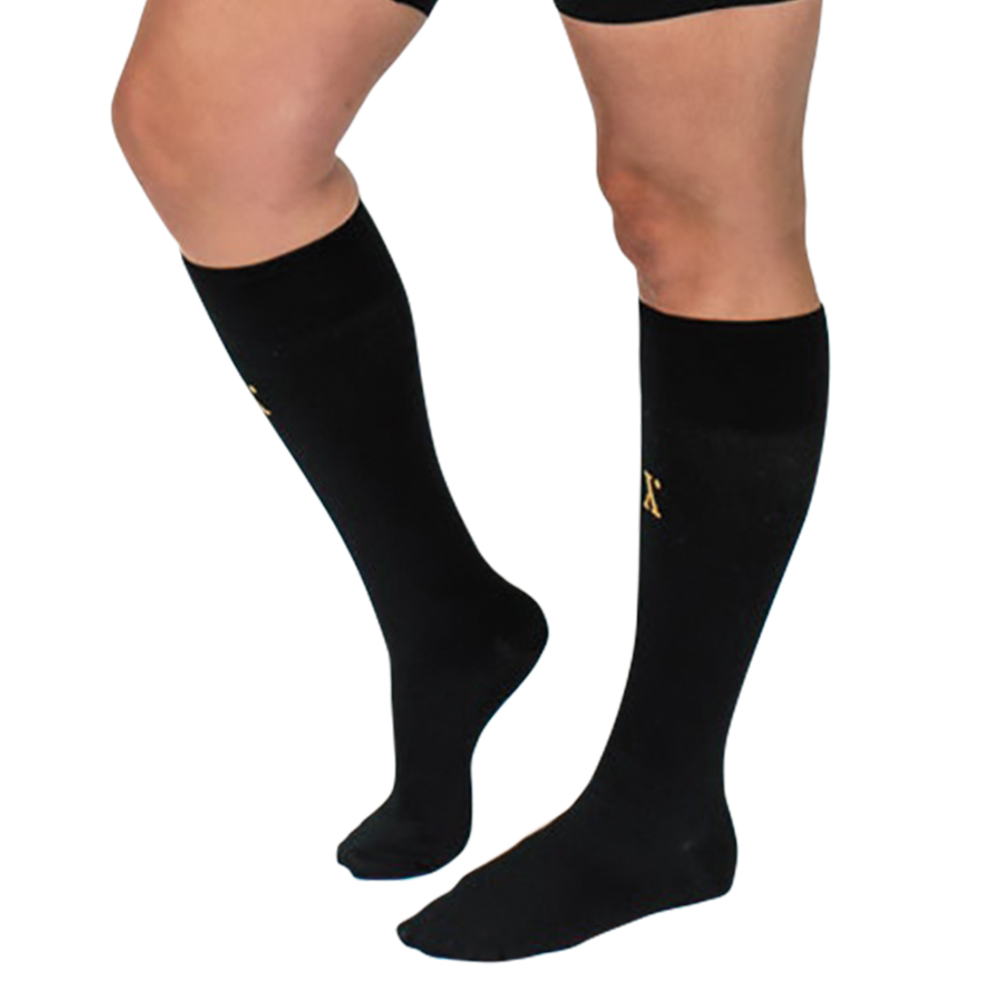
09: Smile Sense
Your gums can bleed more often during pregnancy, and because of this, it’s more important than ever to floss regularly. You can also develop little tumors on your gums—they can resemble a raspberry—and though this didn’t happen to me, a friend of mine was freaked out when she discovered one.
What the expert says: “Many women experience bleeding and swollen gums during pregnancy, which is referred to as pregnancy gingivitis,” explains Los Altos, CA cosmetic dentist Marlana Shile, DDS. “It is the same as normal gingivitis in that the gums swell, bleed and are more sensitive, but it differs in that during pregnancy, the increase in hormones makes the gums more sensitive to plaque and tartar, so they can get inflamed much easier. Some pregnant women also develop little swollen areas on their gums that look like raspberries and bleed easily. These little swellings are caused by the same irritants that cause the pregnancy gingivitis, and their treatment is the same: The most important thing to do is brush and floss thoroughly to remove any plaque and food debris. It is helpful to inform your dental hygienist that you are pregnant, and even consider having your gums and teeth cleaned more often during your pregnancy to help prevent buildup and the subsequent gum inflammation.”
10: The “4th Trimester” No One Talks About
In the few months following childbirth, your hormones will go into overdrive and you may feel completely out of whack as you adjust to life with your new addition. These three tips from New York OB-GYN Carolyn DeLucia, MD can help make things a little easier.
Create a postpartum kit for your bathroom.
“Within the first couple of days after your baby is born, you will feel sore and experience vaginal bleeding,” says Dr. DeLucia, noting that the bleeding is the same after a cesarean birth. “The consistency and color of the bleeding changes over several weeks, which is due to the shrinking of the uterus down to its normal size again. If you had a vaginal birth, you may have stitches, and you will need ice packs or ‘padsicles’—Google this for several DIY recipes. A peri bottle filled with witch hazel is also helpful to squirt while urinating so it does not sting, and it’s a nice way to feel fresh.”
Be prepared for breast changes.
“If you are breastfeeding, you may want to get soothing cream or balm for your nipples and nursing pads to avoid leaking,” Dr. DeLucia advises. “Nursing bras are also very helpful. If you decide not to breastfeed, your milk will still come in, so you may want to have some tight sports bras handy. One trick that helps with breast engorgement as milk comes in is cold cabbage leaves. You simply place them cupped around your breasts, and it is bizarrely soothing. You may smell like cold slaw, but there could be worse things.”
Don’t be ashamed of pelvic floor issues.
They affect thousands of women, and there are experts who can help. “One of my missions is to make pelvic floor therapy part of routine OBGYN care, and to encourage women to rebuild their abdominal and pelvic floor muscles as soon as possible,” says Dr. DeLucia. “It can minimize urinary incontinence, a sense of looseness and other changes that occur after birth. Doing kegel exercises during pregnancy can also help prep the pelvic floor for childbirth.”
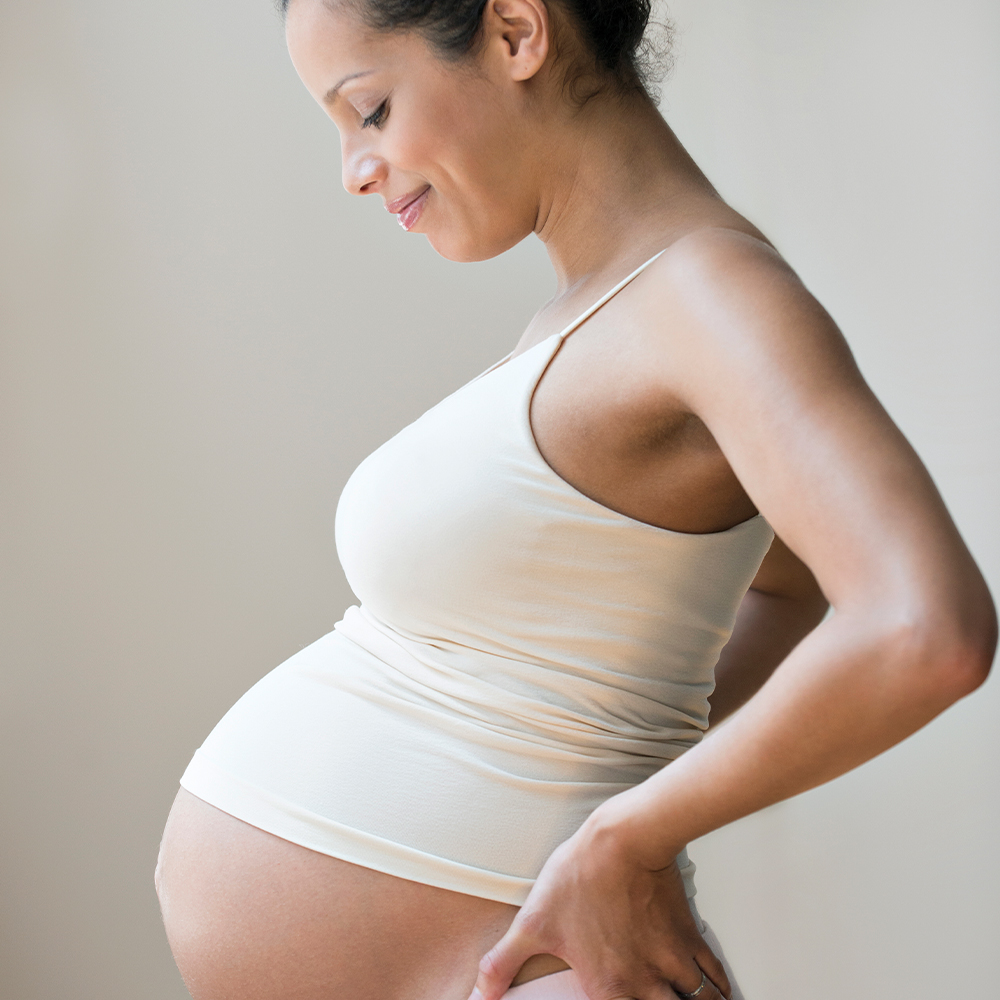
Find a Doctor
Find a NewBeauty “Top Beauty Doctor” Near you